Composer Notes
- Loop
- Sleep Well
- Songs for the African Violet
- Between Worlds
- Elegy
- Lickety Split
- On a Poem by Miho Nonaka: Harvard Square
- Generations
Carlos Simon: Loop
The pandemic of COVID-19 has continued to influence my social, professional and personal life in ways that I never imagined. Day to day life has been like a continuous “loop”; a never-ending quarantine loop. This piece reflects my feelings about the mandated stay-at-home order during the crisis. © Carlos Simon
Carlos Simon: Sleep Well
Sleep Well is a short, gracefully flowing work written in 2018 for Peace Dixon, the nephew of the composer. It was commissioned by Abundant Silence, a publishing imprint of the Festival for Creative Pianists, a non-profit, new music and arts education organization that supports the work of 21st Century musical artists and develops unique and creative learning opportunities for pianists of all ages. © Carlos Simon
Jasmine Barnes: Songs for the African Violet
The African Violet as a flower holds special characteristics similar to Black women: they bloom continuously even throughout the darker months of winter; they come in a variety of vibrant colors and sizes and are notable for their velvety texture; they possess an ability to rid the air of toxic by-products; they’re one of the longest living flowers and with great care can grow for several year; though they are lovely and popular domestic plants, they are at threat of extinction in the wild.
When someone sees a beautiful flower, they often want to savor it by picking it – thus cutting it off from growing just for the flower picker’s selfish wants, not seeing that the act killed the flower, and once the flower is dried up and dead, it’s discarded, forgotten, undesirable. This reflects the treatment of Black Women. Loved for the vibrancy she brings to the world and utilized for pop culture, yet plucked from growth and discarded for dead. “Songs for the African Violet,” by comparison to African Violets, pays homage to Black Women, describing her in ways not oft described and urging the world to take care of her, rather than plucking her from the ground. © Jasmine Barnes
Carlos Simon: Between Worlds
Bill Traylor was born a slave in Alabama in 1853 and died in 1949. He lived long enough to see the United States of America go through many social and political changes. He was an eyewitness to the Civil War, Emancipation, Reconstruction, Jim Crow segregation and the Great Migration. As a self-taught visual artist, his work reflects two separate worlds: rural and urban, black and white, old and new. In many ways the simplified forms in Traylor’s artwork tell of the complexity of his world, creativity, and inspiring bid for self-definition in a dehumanizing segregated culture. This piece is inspired by the evocative nature as a whole and not one piece by Traylor. Themes of mystical folklore, race, and religion pervade Traylor’s work. I imagine these solo pieces as a musical study, hopefully showing Traylor’s life between disparate worlds. © Carlos Simon
Carlos Simon: Elegy
This piece is an artistic reflection dedicated to those who have been murdered wrongfully by an oppressive power: namely Trayvon Martin, Eric Garner and Michael Brown. The stimulus for this composing piece came as a result of prosecuting attorney Robert McCulloch announcing that a selected jury had decided not to indict police officer Darren Wilson after fatally shooting an unarmed teenager, Michael Brown, in Ferguson, Missouri.
The evocative nature of the piece draws on strong lyricism and a lush harmonic charter. A melodic idea is played in all the voices of the ensemble at some point of the piece, either whole or fragmented. The recurring ominous motif represents the cry of those struck down unjustly in this country. While the predominant essence of the piece is sorrowful and contemplative, there are moments of extreme hope represented by bright consonant harmonies. © Carlos Simon
Carlos Simon: Lickety Split
As a young boy, I worked with my grandfather during the summers paving driveways in Rocky Mount, Virginia. He was a task master. Things had to be done the right way and with haste when he asked for it in his own playful way. He would say, “Pull those weeds up lickety split!” or “Shovel that dirt lickety split!” It was tortuous work during the hot summer days but ultimately proved quite lucrative at the end of the day when my grandfather paid me for the day’s work.
This piece, in its whimsical character, draws on inspiration from that colloquial phrase, Lickety Split, coined in the 1860s. It meant to do something quickly or in a hurry. I used the rhythmic syllabic stresses of the phrase (li-ke-ty split) as a main motif for the piece. To create a playful mood, I used bouncing pizzicato lines in the cello part over wildly syncopated rhythms played by the piano. Harmonically, the central idea moves in parallel motion in thirds between the voices. As the piece develops to an agitated state, both instruments relentlessly rhythmically drive to a climactic ending – done so in a lickety split fashion… © Carlos Simon
Shawn Okpebholo: On a Poem by Miho Nonaka: Harvard Square
This composition – inspired by Harvard Square, a poem by the Japanese poet, Miho Nonaka – is a work for solo flute, composed for and premiered by virtuoso flutist Caen Thomason-Redus. It was not my intention to, necessarily, text paint each word of the poem; rather, I tried to evoke the essence of the poem’s meaning. In one word, Nonaka describes her poem as being about “resonance.” A natural term In the music world, the word “resonance,” figuratively speaking, can also mean evoking images, memories and emotions, which she beautifully achieves in Harvard Square. This composition is for the virtuoso flutist, utilizing various extended flute techniques. For example, the composition begins with the flute playing bamboo tones, a way for the modern western flute to sound like a shakuhachi, a Japanese bamboo flute, by using nontraditional fingerings (which I notated in the score). © Shawn Okpebholo
Carlos Simon: Generations
My patriarchal heritage shows three generations of preachers: my great grandfather, Bishop Henry C. Brooks, who began preaching in 1925, my grandfather, Bishop Charles W. Hairston in 1947 and my father Bishop Carlos O. Simon, Sr. in 1994. I chose to use audio clips from past sermons after discovering an old LP and several old cassette tapes of sermons from my great grandfather and grandfather.
I strove to use musical elements that would enhance the message of each proclamation while giving a personal insight to each man. Sow Good Seeds features several sounds that give the impression of something blooming or growing. The Last Days includes a processed Fender Rhodes which my grandfather bought in 1966 at the opening of his church and willed to me at his death in 2010. An ominous bed of dark textures are utilized to create “perilous times”. I used the Hammond organ interspersed throughout Follow the Plan to create a realistic experience of actually being in a worship service. There is a three note (or sometimes chord) motif that appears several times throughout both movements that represent the passion for each one’s vocation. The goal of this work is to recreate the moment at which the sermon was given and to display a musical and cultural heritage that should be celebrated. © Carlos Simon
About the Artists
- Carlos Simon
- Gilles Vonsattel
- Abeo Quartet
- Paul Watkins
- Caen Thomason-Redus
- Nicole Joseph
- Hesper Quartet
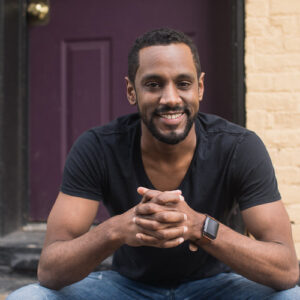 Carlos Simon
Carlos Simon
composer
Stone Composer-in-Residence
Having grown up in Atlanta, with a long lineage of preachers and connections to gospel music, Simon proves that a well-composed song can indeed be a sermon. His compositions span genres and can be found everywhere from film scores to concert music. Simon is the current Composer-in-Residence for the John F. Kennedy Center for the Performing Arts and frequently writes for the National Symphony Orchestra and Washington National Opera, with the 2022/23 season seeing premieres with Boston Symphony Orchestra, Detroit Symphony Orchestra, Brooklyn Art Song Society and Minnesota Orchestra – a tribute to George Floyd and the ongoing movement for racial justice.
These follow recent other commissions from the likes of New York Philharmonic and Los Angeles Philharmonic, and performances from Baltimore Symphony Orchestra, London Symphony Orchestra, and American Ballet Theatre.
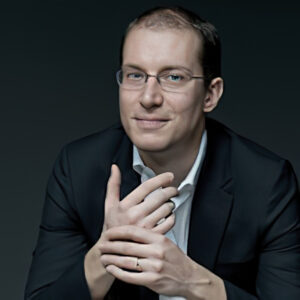 Gilles Vonsattel
Gilles Vonsattel
piano
Eugene Istomin Endowed Piano Chair
Swiss-born American pianist Gilles Vonsattel is the recipient of an Avery Fisher Career Grant and the Andrew Wolf Chamber Music Award, and winner of the Naumburg and Geneva competitions. He has appeared with the Munich Philharmonic, Orchestre Symphonique de Montréal, Boston Symphony, and San Francisco Symphony. Recent performances include appearances with the Chicago Symphony, Gothenburg Symphony, Orchestra della Svizzera Italiana, Vancouver Symphony, Florida Orchestra, as well as multiple appearances in New York and on tour with the Chamber Music Society of Lincoln Center. A deeply committed chamber musician, he appears regularly at festivals such as Santa Fe Chamber, Music@Menlo, Chamber Music Northwest, Spoleto USA, and has performed with the Emerson, Escher, Miró, Danish, Ebène, Calidore, Pacifica, St. Lawrence, Doric, and Borromeo Quartets. Vonsattel received his bachelor’s degree in political science and economics from Columbia University and his master’s degree from The Juilliard School. He serves on the faculties of the University of Massachusetts Amherst and Bard College Conservatory.
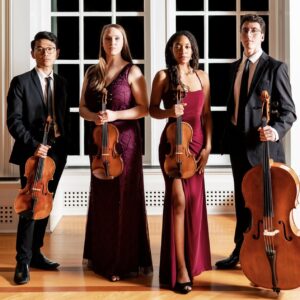 Abeo Quartet
Abeo Quartet
Sphinx Apprentice Ensemble
Sponsored by Taft Stettinius & Hollister, LLP
The Abeo Quartet, formed at Juilliard in 2018, is the inaugural Graduate String Quartet in Residence at the University of Delaware under the mentorship of the Calidore String Quartet. Abeo’s accomplishments include being among ten quartets invited to participate in the 14th Banff International String Quartet Competition in 2022. The quartet was also a First Prize and Audience Favorite Prize winner in the Yellow Springs Chamber Music Competition for Emerging Professional Ensembles and Silver Medal winner of the Chesapeake International Chamber Music Competition, both in 2022. The quartet was a finalist in the 2021 Young Concert Artists International Competition and the silver medal winner of the 2019 Fischoff National Chamber Music Competition.
Abeo has also appeared in Alice Tully Hall, The Kennedy Center’s Reach Festival with pianist Joseph Kalichstein, the Chamber Music Society of Lincoln Center’s masterclass series with the Danish String Quartet, and on WQXR’s Midday Masterpieces. Abeo participated in Norway’s 2019 Vertavo Festival, performing seven Haydn string quartets and was in residence at the Glenstone Museum, debuting “Moonshot” by Alistair Coleman. Abeo has participated in the Montreal International String Quartet Academy, studying with members of Quatuor Ebene, Alban Berg, Takács, Artemis, Cecilia and Meta4 String Quartets. In 2022, they also performed in the Music@Menlo Chamber Institute and Workshop and the Juilliard String Quartet Workshop. In 2021, the Abeo Quartet attended the Norfolk Chamber Music Festival, coached by the Brentano, Emerson and Miró quartets.
During their time at Juilliard, Abeo studied regularly in the Honors Chamber Music Program under the tutelage of The Juilliard String Quartet with Joseph Lin, Astrid Schween and Roger Tapping. The quartet chose the name Abeo / ah – bey – oh / — an expression of joy in a Nigerian dialect — to reflect their love for playing chamber music and sharing it with others.
Njioma Grevious, violin; Rebecca Benjamin, violin; James Kang, viola; Brian Gladlow, cello
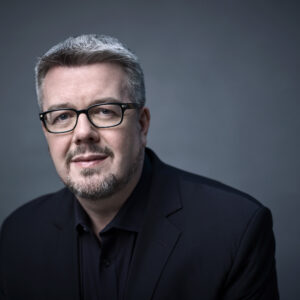 Paul Watkins
Paul Watkins
Artistic Director, cello
Sponsored by Gail & Ira Mondry
Acclaimed for his inspirational performances and eloquent musicianship, Paul Watkins enjoys a remarkably varied and distinguished career as soloist, chamber musician and conductor. He is the Artistic Director of the Great Lakes Chamber Music Festival and in 2019, he was appointed Professor of Cello at the Yale School of Music.
He has performed as concerto soloist with prestigious orchestras throughout the world under eminent conductors including Bernard Haitink, Paavo Berglund, Leonard Slatkin, Sakari Oramo, Gianandrea Noseda, Sir Mark Elder, Sir Andrew Davis, Sir Charles Mackerras, Andris Nelsons, Edo de Waart, Hannu Lintu and Vasily Petrenko.
A dedicated chamber musician, Watkins was a member of the Nash Ensemble from 1997 until 2013, when he joined the Emerson String Quartet. With the Quartet he has traveled extensively, performing at major international festivals including Tanglewood, Aspen, Ravinia, Edinburgh, Berlin and Evian, and has collaborated with artists such as Emanuel Ax, Yefim Bronfman, Evgeny Kissin, Renée Fleming and Barbara Hannigan. He is a regular guest artist of the Chamber Music Society of Lincoln Center.
He took first prize in the 2002 Leeds Conducting Competition, and has held the positions of Music Director of the English Chamber Orchestra and Principal Guest Conductor of the Ulster Orchestra. In recent seasons he made his conducting debuts with the Minnesota Orchestra, Detroit Symphony and Omaha Symphony.
His extensive discography as a cellist includes over 70 recordings, including 18 solo albums for Chandos. His first recording as a conductor, of the Britten and Berg violin concertos with Daniel Hope, received a Grammy nomination.
He plays on a cello made by Domenico Montagnana and Matteo Goffriller in Venice, c.1730.
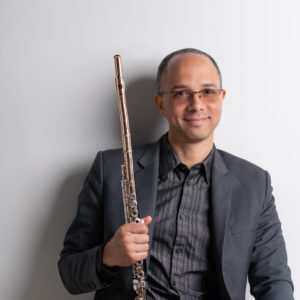 Caen Thomason-Redus
Caen Thomason-Redus
flute
Caen Thomason-Redus is a performer, teacher, recording artist and arts leader who is committed to bringing music to more people. You can hear him on his two most recent releases, Fierce Lyricism with Elena Abend and Subtropical with René Izquierdo, both of which were made possible by an MPower Artist Grant from the Sphinx Organization. His eclectic musical interests include works by living composers, early music, and improvisation. He performed in the Detroit Symphony Orchestra for two years as their African-American Orchestral Fellow, has held playing positions with the Evansville Philharmonic, Central City Opera, Owensboro Symphony, and Missouri Symphony Orchestras, and teaching positions with the University of Wisconsin-Milwaukee, University of Evansville, Wayne State University, and others. He recorded several anthologies of flute repertoire, including The Flute Collection, and appears regularly for masterclasses and lectures. Caen earned performance degrees from Rice University and the University of Redlands, and did additional studies at the University of Michigan and the Mozarteum Universität Salzburg. Caen is married to hornist Kristi Crago and they enjoy spending lots of time with their three children.
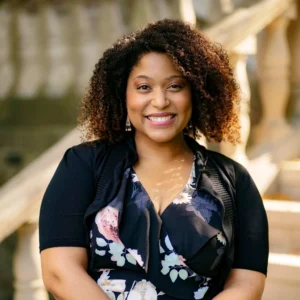 Nicole Joseph
Nicole Joseph
soprano
A Portland, Oregon native, soprano Nicole Joseph received her Masters and Specialist Degree in Voice from the University of Michigan, and Bachelors in Voice from Pacific Lutheran University. Opera credits include Lauretta (Gianni Schicchi) with Sugar Creek Symphony & Song, Susanna (Figaro) and Musetta (La Bohème) with U of M Opera Theatre. As a concert soloist in the Detroit area Nicole has been heard with Flint Symphony, Oakland University, Detroit Chamber Winds & Strings and Southern Great Lakes Symphony. Outside of Michigan she has performed with McCall SummerFest, Siletz Bay Music Festival, Walla Walla Symphony, Portland Chamber Orchestra and Victoria Bach Festival. Nicole was the 2nd Place Winner in the National Bel Canto Vocal Foundation Competition in 2009 and one of two winners in 2013. She is also a Michigan District Winner in the 2010 Metropolitan Opera National Council Auditions, 3rd Place Winner in the 2013 Nicholas Loren Vocal Competition, a semi-finalist and People’s Choice award winner in the 2014 American Traditions Competition, and a finalist in the 2014 Harold Haugh Light Opera Competition.
 Hesper Quartet
Hesper Quartet
Shouse ensemble
Sponsored by Honigman LLP
The Hesper String Quartet is a Korean-American chamber ensemble that was formed as a student group at Stony Brook University in 2022. Since its formation, the quartet has been accepted to the prestigious Emerson String Quartet Institute, where they have been mentored by Philip Setzer, Eugene Drucker, Lawrence Dutton, Paul Watkins, David Finckel, Jennifer Frautschi, and Colin Carr.
The Hesper Quartet has begun its journey maintaining an energetic balance of performing works by Beethoven, Schumann, and Haydn, while performing works by living composers such as Joan Tower. They have performed at the Staller Center for the Arts and have been praised for their group sound, artistry, and ensemble.
The members of the Hesper Quartet hold degrees from the Curtis Institute of Music, Yale University, Seoul National University, Korea National University of Arts, Stony Brook University, and New England Conservatory. All members of the quartet are doctoral candidates at Stony Brook University.
Sojeong Kim, violin; Yejin Yoon, violin; Sohui Yun, viola; Jonathan Kim, cello

